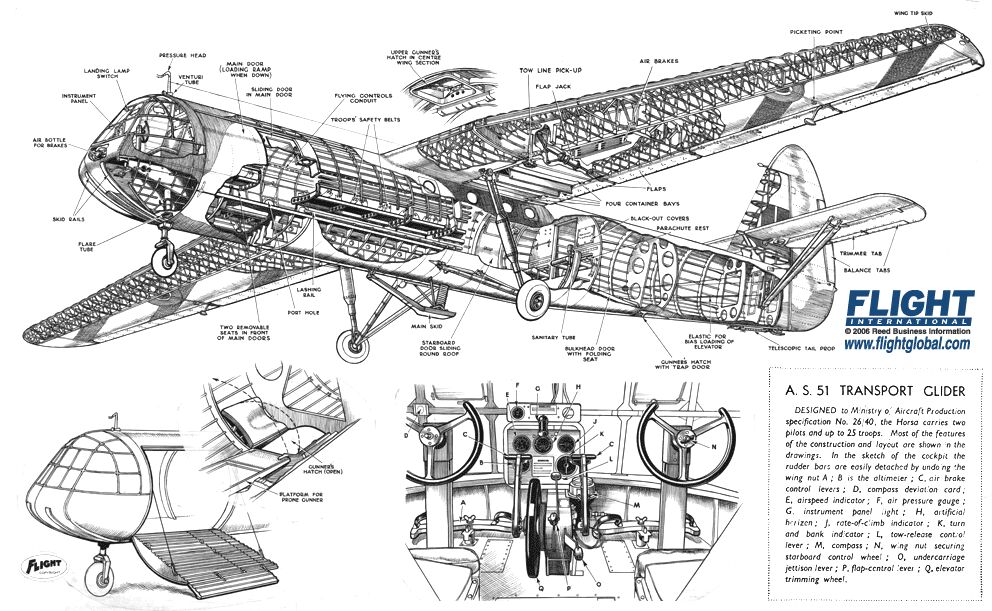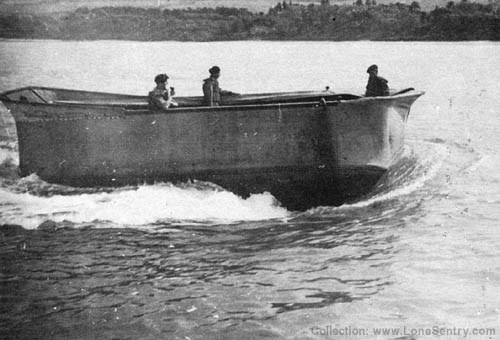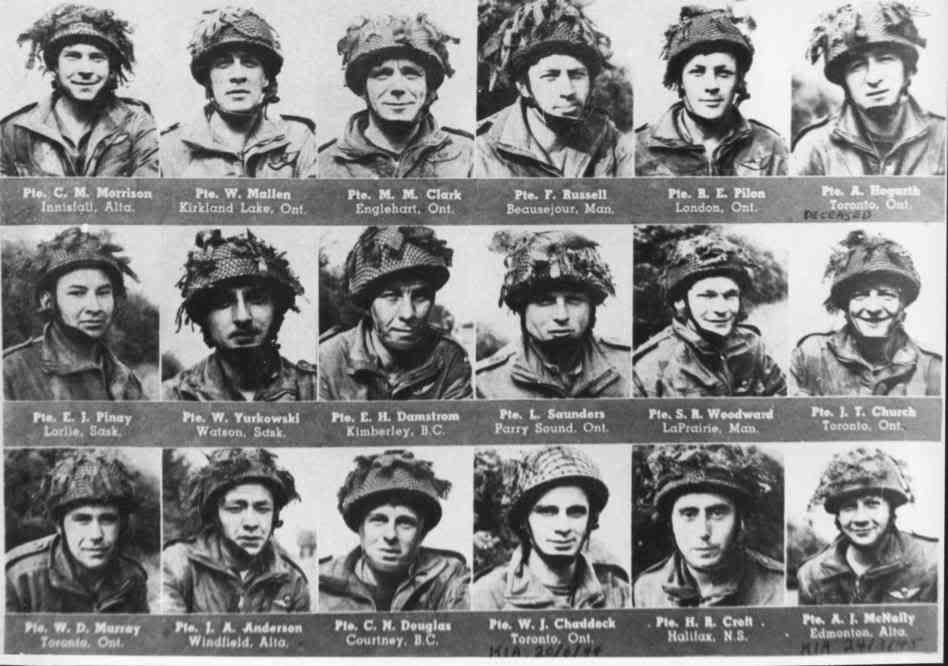Saturday, 31 May 2014
#D-Day 6th June 1944 #DDay70 What Did Troops Eat on D-Day?
When troops either by sea or air landed in Normandy on D-Day how much food were they carrying? As a lover of food this is one issue that would concern me if I was a soldier. When would my next hot meal be?
The common consensus is that troops carried sufficient rations to last 24 hours. The British and Canadians had ration packs which included: meat, chocolate, oatmeal, sugar, chewing gum, matches, broth and boiled sweets. They would be supplied with a small stove to heat up water and cook the food which was mostly in dehydrated form or, like the meat tinned. There is an excellent website where you can buy reproduction rations here: Reprorations.com.
Friday, 30 May 2014
#D-Day #Horsa Gliders #DDay70
 |
Exploded Image of The Horsa Glider
|
The Horsa glider is infamous for its role in airborne operations in the Second World War. Gliders were very useful as they created very little noise after they had been released from their tug plane.It could carry up to 25 troops with their equipment MilitaryFactory.com. The first time they were used in any numbers was the invasion of Sicily in 1943, many were released by tug aircraft too soon and crashed into the sea armyflying.com. The most successful operation was the capture of the 2 bridges in Normandy in the early hours of the 6th June 1944 - D-Day.(Please see previous entry on this post). Over 600 gliders were used in Operation Market Garden landing troops near Arnhem, and 400 in Operation Husky when the Allies crossed the Rhine.ArmyFlying.com.
Please see the Assault Glider trust Website where they are restoring a Horsa, loads of pictures and content. Assaultglidertrust
Thursday, 29 May 2014
#D-Day70 6th June 1944 Airborne Troops
There won't be many people who have not heard of Stephen Ambrose or Band of Brothers - the excellent book he wrote about Easy Company of the 101st U.S Airborne Regt, which was adapted for television. One of the best Christmas presents I ever received from my other half was the box set of Band of Brothers, available at http://amazon.co.uk and other good outlets. I'm not solely writing about U.S involvement on D-Day, the common view is that there is so much publicity about American involvement that they forgot that it was also British, Commonwealth and Allied European troops who took part in the fighting.
There are plenty of excellent books out there, in particular I do enjoy reading Pegasus Bridge by Ambrose, which goes into detail about the British 6th Airborne. It's origins, training, the people who took part, the landings and action after D-Day. These men were tough. They had to be. Howard during training like the rest of D Company marched the men from Devonshire to Bulford, 130 miles in 1942. (Ambrose, p.p 35,36).
They trained at night and slept during daylight hours, this was unheard of at the time, but because of good training, on D-day itself 6th Airborne successfully captured the 2 bridges over the River Orne at Ranville and the canal bridge at Benouville (later called Pegasus Bridge). Taken to their destination in towed Horse gliders, the glider pilot training also paid off, landing with pin point accuracy next to the bridges and not in the canal or river. The bridges would be held until relieved, as they were vital for the allied advance inland on the outskirts of Caen.
British Paratroopers also took part in the battle in the early hours of the 6th June 1944. the Merville Battery was a target as it covered the coast, in particular Sword Beach http://www.bbc.co.uk/history/worldwars/wwtwo/dday_beachhead_01.shtml. Like most Paratroopers on D-Day, most were scattered over a wide area considerable distances from their objectives. To attack the battery Lt-Col Otway could only muster around 150 men, instead of 650 (See this link on the BBC History Website :http://www.bbc.co.uk/history/worldwars/wwtwo/dday_audio_04.shtml .The battery had to be taken before the seaborne landings took place, Otway had to attack as planned. The Paras went ahead, won the battle capturing around 30 Germans.
Canadian paratroops also deserve a mention. The 1st Canadian Parachute Battalion was part of the 21st Army Group and their objectives included; securing Drop Zone V by destroying a German HQ, destroying bridges at Robehomme and Varaville, providing cover to the British 9th battalion at Merville and securing high ground at Le Mesnil Crossroads http://www.magma.ca/~canpara/history.html#set_3.
Bibliography
Ambrose, S, Pegasus Bridge.
Neillands, R, De Normann, R, D-Day 1944 Voices From Normandy.
There are plenty of excellent books out there, in particular I do enjoy reading Pegasus Bridge by Ambrose, which goes into detail about the British 6th Airborne. It's origins, training, the people who took part, the landings and action after D-Day. These men were tough. They had to be. Howard during training like the rest of D Company marched the men from Devonshire to Bulford, 130 miles in 1942. (Ambrose, p.p 35,36).
They trained at night and slept during daylight hours, this was unheard of at the time, but because of good training, on D-day itself 6th Airborne successfully captured the 2 bridges over the River Orne at Ranville and the canal bridge at Benouville (later called Pegasus Bridge). Taken to their destination in towed Horse gliders, the glider pilot training also paid off, landing with pin point accuracy next to the bridges and not in the canal or river. The bridges would be held until relieved, as they were vital for the allied advance inland on the outskirts of Caen.
British Paratroopers also took part in the battle in the early hours of the 6th June 1944. the Merville Battery was a target as it covered the coast, in particular Sword Beach http://www.bbc.co.uk/history/worldwars/wwtwo/dday_beachhead_01.shtml. Like most Paratroopers on D-Day, most were scattered over a wide area considerable distances from their objectives. To attack the battery Lt-Col Otway could only muster around 150 men, instead of 650 (See this link on the BBC History Website :http://www.bbc.co.uk/history/worldwars/wwtwo/dday_audio_04.shtml .The battery had to be taken before the seaborne landings took place, Otway had to attack as planned. The Paras went ahead, won the battle capturing around 30 Germans.
 |
| Plan Of Attack of Merville Battery |
 |
| Observation Photograph Of Merville |
Canadian paratroops also deserve a mention. The 1st Canadian Parachute Battalion was part of the 21st Army Group and their objectives included; securing Drop Zone V by destroying a German HQ, destroying bridges at Robehomme and Varaville, providing cover to the British 9th battalion at Merville and securing high ground at Le Mesnil Crossroads http://www.magma.ca/~canpara/history.html#set_3.
Bibliography
Ambrose, S, Pegasus Bridge.
Neillands, R, De Normann, R, D-Day 1944 Voices From Normandy.
#DDay70 P.L.U.T.O - Pipeline Under The Ocean
 |
| Cross Section Of P.L.U.T.O Pipeline |
P.L.U.T.O - Pipeline Under the Ocean. Assuming that the Normandy invasion was successful, and the Allies had gained a foothold on French soil then logistical problems would arise. As well as food, ammunition spares and medical supplies, fuel was vital for the Allied advance inland. Due to the problems of transporting fuel via ship, (the Allies did not plan to capture any harbours) they did not want to clutter up the landing grounds with fuel tanker. So, arose an ingenious solution, to lay a pipeline from England to France across the English Channel.
Planning for P.L.U.T.O began in 1942, and eventual production and testing encountered many problems, such as kinking, twisting, collapse due to water pressure and other factors.
Each mile of pipe used 24 tons of lead, 7.5 tons of steel tape and 15 tons of steel armour wire and smaller amounts of lighter materials. The external diameter of the pipe was 4.5 inches.Combined Ops Website
 |
| Route Of P.L.U.T.O Pipeline |
In all about 500 miles of pipeline were laid in an average laying time over the 30 mile stretch of about 5 hours. In January 1945 the system delivered a disappointing 300 tons but by March this had increased to 3000 tons and later still to 4000 tons. This amounted to over 1,000,000 gallons per day giving a total of 172,000,000 gallons delivered in total up to the end of hostilities. During the operation to lay the cables an HQ ship, several cable ships, tugs, trawlers and barges were employed on this specialised work - a total of 34 vessels with 600 men and officers under Captain J.F.Hutchings.Combined Ops WebsiteMost of the work to manufacture the pipeline was completed in Britain, but due to the volume needed the U.S helped, making a total of 140 tonnes of pipeline out of a total of over 700. D-Day saw much ingenuity, PLUTO was a great idea.
.jpg) |
| P.L.U.T.O Pumping Stations in 2009. |
Wednesday, 28 May 2014
#WW2 D-Day Hero Co Sgt Major Stanley Hollis - Green Howards Regiment
Stanley Hollis Memorial Website LinkStanley E. Hollis VC 1912 - 1972"The only serviceman to be awarded the Victoria Cross on D-Day June 6, 1944, for his actions at Gold Beach, La Rivière, The Mont Fleury Battery and Crépon, during the Normandy Invasion of Europe."An immensely brave and modest family man, born at Archibald Street, Middlesbrough, on September 21, 1912.Stanley E. Hollis VC 1912 - 1972 "The only serviceman to be awarded the Victoria Cross on D-Day June 6, 1944, for his actions at Gold Beach, La Rivière, The Mont Fleury Battery and Crépon, during the Normandy Invasion of Europe. "An immensely brave and modest family man, born at Archibald Street, Middlesbrough, on September 21, 1912. "A never-to-be-forgotten leader, protector and inspiration to his comrades." © Mike Morgan, author of the authorised biography "D-Day Hero: CSM Stanley Hollis VC""A never-to-be-forgotten leader, protector and inspiration to his comrades."© Mike Morgan, author of the authorised biography "D-Day Hero: CSM Stanley Hollis VC"
Stanley Hollis was a Co Sgt Major of 6th Battalion Green Howards, a northern regiment. He won the only V.C awarded for his actions on D-Day. Read the full story here: http://www.flamesofwar.com/hobby.aspx?art_id=286
There is an excellent BBC Tees Interview and documentary about Stan Hollis, you can find it here: http://www.bbc.co.uk/programmes/p020gt21
#D-Day 6th June 1944 More Of Hobart's Funnies
Last night I forgot to mention a couple of Hobart's inventions created for D-Day.
The AVRE was an armoured bulldozer, useful for pushing obstacles aside and also for Engineers to shelter behind.
There was also a bridge laying tank, again a Churchill:
 |
| Churchill Bridge Laying Tank |
There was no need for Royal Engineers to spend hours building a bailey bridge under fire when they had these, they were ideal for crossing narrow rivers.
To summarise, These were British inventions, not American. Sometimes the British used American kit and improved it for different scenarios such as the DD swimming tank and the Sherman fitted with a 17pdr gun.
I can't help but scratch my head as to why General Bradley didn't adopt these tanks in larger numbers, even if only for D-Day instead of relying on frontal assaults by engineers and infantry. they may have saved many lives.
Tuesday, 27 May 2014
D-day 6th June 1944 - Hobart's Funnies
At the moment there is a lot of activity on all media regarding D-Day. The most common objection about the event is that it seems British ,European, Allied and Commonwealth troops have largely been overlooked because the United States won the war for us... At least that's what Hollywood would like us to think. There is plenty of evidence to substantiate this, look at what has been broadcast on TV in the last 10 years - 'Band Of Brothers' was an excellent series about Easy Company from the U.S 101st Airborne .
So its up to the rest of us amateur historians, writers and professionals to put this right. I am going to try and publish a page on my blog every day until 6th June 2014 about D-Day and I am starting with the infamous 'Hobart's Funnies'.
Major-General Sir Percy Hobart was one of the many characters in World War 2 that were eccentric. Hobart's ideas about armoured weaponry were so ahead of their time in the 1930's that he was largely confined to a desk and an early retirement (Neillands, De Normann p.51).By 1940 Hobart had been relieved of his post in the 7th Armoured in Egypt and was serving as a Corporal in the Home Guard(Neillands, De Normann p.52). Winston Churchill intervened recognising Hobart's technical genius and reassigned him to the 79th Division which consisted of modified armour especially developed for use on D-Day.
The Bobbin was a modified Churchill tank that laid down a road over quicksand for other vehicles to follow.
http://www.thinkdefence.co.uk/wp-content/uploads/2014/05/Churchill-Assault-Vehicle-Royal-Engineers-AVRE-equipped-with-the-Type-C-Mk-2-Bobbin-track-laying-device.jpg
They were useful at Gold Beach laying 4 lanes over soft sand for other vehicles to follow, without these bobbin tanks vehicles would not have advanced inland.
The Petard tank was, like the bobbin, a Churchill based gadget. It was modified to carry a massive gun which could destroy concrete bunker defences. It was invaluable supporting infantry as was the Crocodile.
The Crocodile was probably the scariest tank Hobart developed. It would result in a grisly death for the enemy.
The flail tank was equipped with a roller and chains on the front of the tank which would clear mines on the beach, it was a very noisy occupation , especially with mines exploding.
The Facine tank was a relatively simple invention, stemming back to World War 1. When the tank came to a wide anti tank trench, all it did was release the large bundle of wood carried on the front and crossed over it.
Bibliography
Neillands,R, De Normann, R, D-Day 1944, Voices From Normandy, London (1993).
Ambrose, S, D-Day, U.S.A (1994).
So its up to the rest of us amateur historians, writers and professionals to put this right. I am going to try and publish a page on my blog every day until 6th June 2014 about D-Day and I am starting with the infamous 'Hobart's Funnies'.
 |
| Major General Sir Percy Hobart http://www.historylearningsite.co.uk/fileadmin/historyLearningSite/genera4.jpg |
Major-General Sir Percy Hobart was one of the many characters in World War 2 that were eccentric. Hobart's ideas about armoured weaponry were so ahead of their time in the 1930's that he was largely confined to a desk and an early retirement (Neillands, De Normann p.51).By 1940 Hobart had been relieved of his post in the 7th Armoured in Egypt and was serving as a Corporal in the Home Guard(Neillands, De Normann p.52). Winston Churchill intervened recognising Hobart's technical genius and reassigned him to the 79th Division which consisted of modified armour especially developed for use on D-Day.
The Bobbin was a modified Churchill tank that laid down a road over quicksand for other vehicles to follow.
http://www.thinkdefence.co.uk/wp-content/uploads/2014/05/Churchill-Assault-Vehicle-Royal-Engineers-AVRE-equipped-with-the-Type-C-Mk-2-Bobbin-track-laying-device.jpg
They were useful at Gold Beach laying 4 lanes over soft sand for other vehicles to follow, without these bobbin tanks vehicles would not have advanced inland.
| Petard crew with a 'dustbin'. |
 |
| Crocodile Flamethrower |
 |
| D-D tank full steam ahead. |
DD tanks were amphibious with a canvas screen and a propellor which enabled them to be launched away from shore. They could not be launched too far out, as was proven at Omaha when the majority were lost.
 |
| Flail tank. |
 |
| Facine obstacle clearing. |
These are just a few of Hobart's inventions. On D-Day itself they would be loaded in order, i.e mine clearer first, then maybe the carpet layer, followed by the Petard and Crocodile. Without them there would have been many more casualties.
Bibliography
Neillands,R, De Normann, R, D-Day 1944, Voices From Normandy, London (1993).
Ambrose, S, D-Day, U.S.A (1994).
Labels:
101st Airborne,
6th June 1944,
Band of Brothers,
Bobbin tank,
crocodile,
D-Day,
DD tank,
facine,
Gold beach,
Hobart's Funnies,
Hollywood,
mine clearing,
Olde Curiosity Blog,
petard tank,
Petard tank.
Subscribe to:
Posts (Atom)






